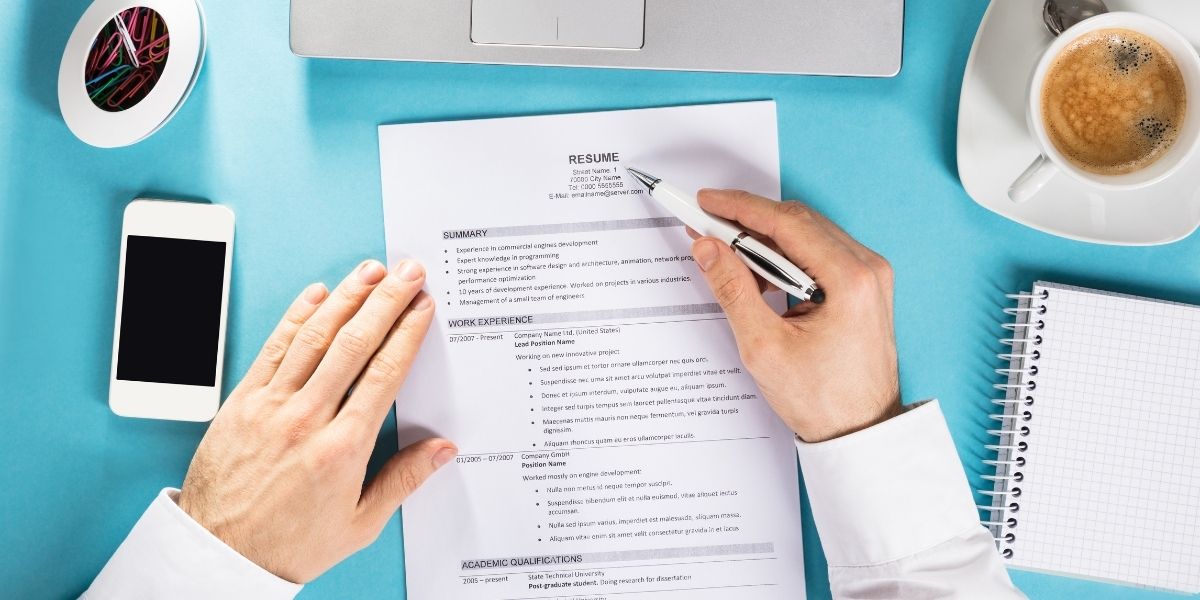Career Advice
9 Secret Resume Tips To Boost Your Interview Chances

We were glad to share tried-and-proven resume tips and job search strategies in a recent interview with Channel NewsAsia. The questions CNA posed to us are in fact common questions on resume writing – ones that our clients frequently come to us with too. For the benefit of all jobseekers, we’ve published our full interview responses here. These tips have helped set up our clients for success in their job search. We hope you’ll find them useful too 🙂
Resume Writing Tips for Malaysia Jobseekers
- What common resume mistakes do jobseekers make?
- What information should I leave out in my resume? Conversely, what information should I absolutely include?
- How should I address periods of unemployment, part-time work, or a gap year in my resume?
- What fonts and font sizes should I use in my resume?
- Can I use colours, designs and graphics in my resume?
- How do I tailor my resume for different industries?
- How do I prioritise work experiences in my resume?
- What should the tone of my resume be?
- Should I include part-time work experiences in my resume?
1. What common resume mistakes do jobseekers make?
Many candidates neglect to include their accomplishments – results they’ve achieved across their career. In their work descriptions they list only their day-to-day responsibilities, which simply shows that they can do their job. Achievements on the other hand, show they excel at it.
Including metrics is also essential to give a sense of the scale and impact of your work, and each achievement and job description should be supported by a measurable quantifier. For job descriptions, this can include things like sizes of teams led, budgets managed, etc. For achievements, a great way to structure them is “Accomplished [X] as measured by [Y] while doing [Z].”
Candidates also often make mistakes when including a skills section, either by burying it at the end of their resumes, or focusing on soft skills instead of higher value, hard skills. Key skills should be listed near the top of the resume; this is essential to communicate core skill sets to recruiters at a glance.
Spelling and grammar errors are also fairly common, and are unfortunately deadly mistakes. They’re glaringly obvious to hiring managers, and can cause resumes to be instantly rejected. We strongly encourage candidates to thoroughly review their job application documents before submitting them.
ResumeWriter Tip: Including relevant metrics hugely increases the impact your CV makes on recruiters. Our in-depth CV Guide elaborates further on metrics, and covers every other aspect of resume writing (for each section of your resume) in great detail.
If candidates are unsure of their resumes, ResumeWriter offers free resume feedback sessions to support Malaysia jobseekers in their applications.
2. What information should I leave out in my resume? Conversely, what information should I absolutely include?
For candidates with very limited or no prior work experience, including details on CCAs, school projects and other school activities in a resume can be beneficial. They may help demonstrate transferable and essential skill sets, such as leadership and interpersonal skills, which can’t otherwise be conveyed.
More experienced candidates however (generally those with over 3 years’ experience), should omit these details and focus instead on highlighting their work experiences and accomplishments; with practical work experience included, a hiring manager is much less likely to be interested in school activities (they’re simply not as relevant).
3. How should I address periods of unemployment, part-time work, or a gap year in my resume?
There is no pressing need to state the reason for leaving past jobs or taking a break in your resume, though there is also no harm in including mention of things like ‘Maternity Leave’ or ‘Volunteer Work’.
Importantly, no matter the reason for a gap, jobseekers should always be honest, and not attempt to fudge employment dates. Lying on resumes is a big no-no. HR can easily contact past employers to verify these details.
If the question arises during an interview, it is best to be upfront with the reason for unemployment.
We also strongly recommend that candidates include a Cover Letter in their job application. This gives them the opportunity to speak positively about their break, and the value they can bring to their new employer following it.
For example, new mothers can use a Cover Letter to convey to employers how energised they are to return to the workforce, and demonstrate their enthusiasm, commitment, and transferable skills. Likewise, jobseekers that were recently retrenched can share how they have been productively upskilling while searching for a new role.
4. What fonts and font sizes should I use in my resume?
One of the first things recruiters notice about a resume is the font a candidate has used. The choice of font might seem minor, but it speaks volumes about your resume, and also your character.
Regardless of industry, we recommend selecting a font that looks suitably formal, clean, serious and professional, and appropriately sized. A font size between 11 to 12 is ideal for the body text of a resume.
When in doubt, use serif fonts – such as Garamond, Cambria or Georgia – for longer documents or paragraphs of text. The general consensus is that these fonts are aesthetically pleasing and easier on the eyes.
Candidates can alternatively try professional-looking sans serif fonts such as Lato or Helvetica. These are less common than Arial or Calibri, and more likely to catch recruiters’ attention.
5. Can I use colours, designs and graphics in my resume?
We highly recommend jobseekers stick to a simple, clean, and professional resume format. A black and white resume format is timeless and appropriate for any industry or role. When used sparingly, a touch of colour can help candidates stand out.
ResumeWriter Tip: Substance counts more than resume fancy formats. When in doubt, use one of our professional resume templates (free download), available in modern and classic styles.
Avoid using fancy, complex, or graphic heavy resume designs and formats.
Many companies use ATS (Applicant Tracking System) scanners as their first line of candidate screening; something not many jobseekers are aware of. Unfortunately, most fancy resume templates are not ATS-friendly, meaning not all the details of the resume will be read by the scanner, and as a result these candidates may be immediately rejected.
It is also best to avoid bright colours or multiple colours in a resume. These often appear unprofessional, and distract recruiters from the actual resume content, hurting rather than helping a candidate’s chances.
Even when applying to a creative role or field, such as Advertising, we strongly recommend sticking to an ATS-friendly resume format. These jobseekers can be a little more creative in other job application documents, such as their Cover Letter or portfolio.
6. How do I tailor my resume for different industries?
When applying to different industries, candidates should demonstrate how their past experiences and skills are relevant or transferable to the role they are targeting. By emphasising those of the highest value to the targeted industry, they can ensure they present as a strong candidate no matter the scenario.
For example, a finance manager applying to an advertising agency could focus on and highlight their ability to collect payment from clients, keeping their aged debtors to a minimum. If applying to a healthcare organisation, the same finance manager could instead emphasise their track record in cutting costs and improving margins.
ResumeWriter Tip: Struggling with tailoring your resume for a different role or industry? Send it over to us for a free CV analysis. Tell us more about the roles you’re applying for. We’ll review your CV in detail and provide our recommendations on how you can best position yourself for the role – at no cost!
7. I have a lot of work experience. How do I prioritise what to include in my resume? What is the maximum length for resumes?
A maximum resume length of 2-3 pages is generally acceptable for job openings in Malaysia.
As a rule of thumb, the more concise a resume, the better. If a jobseeker is joining the workforce as a fresh graduate, or has fewer than 5 years’ experience, their resume should be kept within 2 pages.
A mid to senior level jobseeker might have enough work experience to justify a 2-3 page long resume.
When determining what to include or prioritise, jobseekers should focus on their most recent roles, as these are likely to be the most relevant to their current career goals; for roles 5 positions or over 10 years back, jobseekers can often simply limit it to the job title, company, and dates.
8. What should the tone of the resume be?
Keep the tone of the resume positive, confident and formal. In general, sentences should be concise and direct. Cut out buzzwords, and even articles and pronouns, for maximum impact.
By using action words or power verbs, and substantiating claims with metrics, candidates can impress and come across credible and confident.
For example, stating “Directed team of 12, managing annual sales pipeline of $12M…” appears much more impressive (and professional), than “Sales ninja, responsible for growing the brand’s synergy…”
9. I’m a fresh graduate with little prior work experience, except part-time work. Should I include part-time work experiences in my resume?
Only include part-time work experiences that are relevant to your desired job or career goals. Irrelevant work experiences may distract from the key narrative of your resume.
Fresh graduates who have little work experience should also include internship experiences, community service, or other relevant activities, as these can often present opportunities to showcase transferable skills, industry knowledge, and ability. They can also highlight relevant courses they’ve undertaken, to show their interest and theoretical foundation in their desired field.
Some fields – such as programming and creative design – place more focus on capabilities than paper qualifications. For these roles, graduates can include links to their previous works or portfolio.
Thank you to Ms. Khoo Bee Kim from CNA Lifestyle for covering us, and Hitesh Suresh, CEO of ResumeWriter for his viewpoints.

